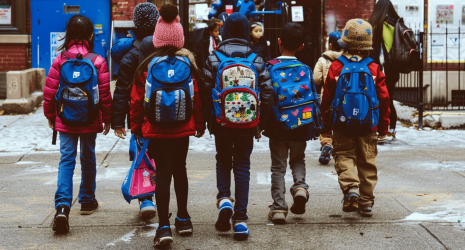
Dr. Majd wrote 300 academic articles about different psychological subjects. There are some samples of her articles.
Articles

According to Rao & Fisher (2021), the COVID-19 pandemic had a silver lining because it provided many opportunities for research in child development, including a chance to collect longitudinal data about children and families across phases of the pandemic. Apparently, the volume of submissions for studies on this topic was unprecedented and careful consideration was needed to evaluate each article’s contribution based on the editors’ judgment (Rao & Fisher, 2021). The criteria used to select articles were (a) the desire for more diversity in methods and participants, (b) articles with lower- and middle-income participants in countries other than the U.S., (c) the inclusion of a statement that children were isolated from social restrictions, (d) if the article differentiated between the impact of the virus itself and preventative measures against it, (e) a comparison of varying resource contexts, (f) awareness of negative consequences from difficulties in predicting human behavior, and (g) how protective measures may have alleviated some of the pandemic’s adverse influences (Rao & Fisher, 2021)
Covid 19 article

Nature v. Nurture
A persistent question in developmental psychology is about the cause of human behavior and the ongoing debate about the relative influence of nature versus nurture (Feldman, 2022). For example, some scholars continue to question if inherited genetic influences are the primary cause of human behavior, or if we should attribute it to environmental factors. As Feldman (2022) noted, this may seem to be a simple question, but clearly, no simple answer exists. In fact, any attempt to depict the influence of nature versus the influence of nurture is inappropriate since they tend to interact, rather than work in isolation. Their relative degree of influence also appears to depend on the domain of research. For instance, in the case of temperament, nature seems to have the strongest influence because it is associated with enduring individual characteristics, although environmental influences still impact how individual temperament is expressed (Feldman, 2022) …

Social Vulnerability...
Social Vulnerability (SV) for Children and adolescents, which is Generally Defined as Living in a State of Conditions That of Conditions That Increase the Risk of Exposure to Danger
The topic for the proposed research is social vulnerability (SV) for children and adolescents, which is generally defined as living in a state of conditions that increase the risk of exposure to danger (Ferreira et al., 2021). The underlying psychological mechanism of SV, in other words the specific social component, is impairment in an individual’s inability to identify or evade potentially harmful interpersonal interactions (Pinsker et al., 2006). Two constructs contribute to SV. One is credulity, which is the tendency to believe in things even if they are highly questionable and not supported by evidence. The other is gullibility, which is a state of being vulnerable to tricks or manipulation (Greenspan et al., 2001). People high in SV have a diminished capacity to interact effectively in social situations, which increases the probability of sustained negative patterns of interpersonal interactions and a greater risk of being victimized or exploited (Hodes & Vostanis, 2019; Seward et al., 2018) …

stereotyping is a...
In summary articles, stereotyping is a type of bias related to cognition. PERSONAL PERSPECTIVE ...

Personal perspective...
The purpose of this personal perspective paper is to critically evaluate six theoretical
approaches that are used to conceptualize and treat childhood psychopathology and to analyze
them in relation to my personal background, values, life experiences, and personality. There are multiple reasons why it is important to examine thinking about the causes and treatment of psychopathology. For example, these frameworks often provide a basis for understanding what is typical versus atypical during specific periods of development and this impacts if, when, and which types of interventions are used (Parritz & Troy, 2018). Ways of thinking about the cause and treatment of psychopathology also affect how classification schemes are created, including the dimensional approach used in the Diagnostic and Statistical Manual (American Psychiatric Association, 2013). The first edition of this manual was published in 1952, to provide mental health practitioners with a common language for diagnostic purposes (Blashfield et al., 2014).
However, it is currently in its fifth edition because it has repeatedly been updated as thinking
about the causes and treatment of psychopathology has changed….

Case Presentation ...
Case Presentation Personal Perspective
Key Clinical Issues
Client Demographics
Sarah is a 13-year-old, white female who has been suspended from school 3 times in the past 3 months. She lives with her mother, who is an attorney, and her father, who is an investment banker. Sarah was referred for therapy by her middle school guidance counselor because of frequent behavior problems at school. Presenting Problem Sarah’s teachers report that she often threatens classmates with physical violence to get her way. Most recently, she was suspended from school for punching a classmate in the stomach because she wouldn’t “get out of her way” in the lunch line. Another time, she pushed a classmate into his locker to “get her pen back.” As it turns out, the pen belonged to the classmate, not Sarah. On two occasions, Sarah was caught going through a classmate’s backpack to steal lunch money. Another significant concern is that Sarah skips school at least once every two weeks. Sarah’s parents report similar behavior problems at home. Sarah’s mom says that she repeatedly sneaks out of the house out night to meet up with a 16-year-old boy who lives down the street. Her father says that she becomes angry and defiant when either he or his wife tries to reprimand her for breaking the rules at home. Recently, she was brought home in a police car at 2 a.m. because she and some friends had broken into a local swim club to go skinny dipping. They cut a giant hole in a chain-link fence to get into the club, and then they vandalized the snack bar with spray paint …

There are several...
There are several biopsychosocial factors that contribute to the development of childhood and family problems.
Choose one of these factors, describe it, and using scriptural support, discuss at least one way that it could be addressed effectively by the church community. Over time, breakthroughs in science and technology continue to inform us about biopsychosocial factors that contribute to the development of childhood and family problems. One of these problems is depression, a type of psychopathology caused by a variety of direct and interactive biopsychosocial pathways (Garber, 2007; as cited in Parritz & Troy, 2018). A
starting point for conceptualizing the etiology of depression for young people is to consider a set of individual factors that includes “genes, neurobiology, temperament, cognitive style, and self-regulation” (Garber, 2007; as cited in Parritz & Troy, 2018, p. 227). These individual factors have an indirect path to depression because ultimately developing this mental disorder also depends on contextual factors, like the individual’s interpersonal relationships and stressful life events, and how he or she responds to stressors (Garber, 2007; as cited in Parritz & Troy, 2018)
Case Presentation Case Presentation: Disorders of Social Cognition and Executive Functioning
Key Clinical Issues
Client Demographics
Dustin is a 9-year-old boy with a history of low academic achievement. He lives with his mom, Stephanie, his dad, Michael, and his younger brother, Kyle, who is 7 years old. Stephanie is a 3rd grade teacher at a local elementary school and Michael is an architect. Presenting Problem Dustin was referred for psychological testing by his pediatrician who is concerned
that Dustin might have a learning disability. Dustin’s academic problems began 2 years earlier when he was in second grade. He began making mistakes on homework and asking teachers to repeat instructions on assignments. In class, teachers observe that Dustin has difficulty listening and often appears to be daydreaming. One teacher reported that, “Dustin always seems to be off in his own world. He seems more interested in doodling in his notebook or looking out the window than listening in class.” Stephanie and Michael report that Dustin is having similar problems listening
at home. Michael says that he must remind Dustin several times to complete a task (e.g., get in the shower, take out the trash). Dustin’s parents have noticed that he has become increasingly disorganized over the past couple of years. He often misplaces items and forgets where he has left them (e.g., his shoes, his homework, sports equipment). Dustin’s parents report that he is generally obedient and well-behaved, except when it comes to completing homework. Stephanie reports that she asks Dustin to go do his homework, and he sits down to do…
Case Presentation ...

Client Demographics
Ms. S. is a 17-year-old female. She lives at home with her one younger brother who is 15 years old, and her parents who are married. She has been working at a fast-food restaurant within walking distance of her house for the past six months. She grew up in a middle-class neighborhood in a southern city with her family. Ms. S.’s mother has a high school education and is currently employed as a teacher’s aide in a nearby public elementary school. Ms. S.’s father attended vocational school and currently is a master carpenter who owns a successful contracting business. Presenting Problem
Ms. S. states that her younger brother has always done well in school, but she has always struggled, especially due to difficulties in reading and writing. She has never enjoyed school. Ms. S. reported that when she was in elementary school, she always felt embarrassed about reading aloud because “all of the other kids read so much better than she did.” Ms. S. remembers having difficulty with stumbling over her words and sounding them out. Ms. S. also reported that she had ongoing difficulty with spelling words, even up until junior high school. One of her most embarrassing memories was not learning how to spell the word “because” correctly until she was in the 8th grade. She also reported that she was only able to complete the 10th grade by working very hard and doing extra credit projects. However, during her junior year of high school, the workload became so demanding that she felt as though “there wasn’t enough time in a day” for her to keep up with all the required reading and writing…
Key Clinical Issues

Case Presentation Disorders of Learning and Intellectual Functioning
Key Clinical Issues
Client Demographics
Ms. S. is a 17-year-old female. She lives at home with her one younger brother who is 15 years old, and her parents who are married. She has been working at a fast-food restaurant within walking distance of her house for the past six months. She grew up in a middle-class neighborhood in a southern city with her family. Ms. S.’s mother has a high school education and is currently employed as a teacher’s aide in a nearby public elementary school. Ms. S.’s father attended vocational school and currently is a master carpenter who owns a successful contracting business. Presenting Problem Ms. S. states that her younger brother has always done well in school, but she has always struggled, especially due to difficulties in reading and writing. She has never enjoyed school. Ms. S. reported that when she was in elementary school, she always felt embarrassed about reading aloud because “all of the other kids read so much better than she did.” Ms. S. remembers having difficulty with stumbling over her words and sounding them out. Ms. S. also reported that she had ongoing difficulty with spelling words, even up until junior high school. One of her most embarrassing memories was not learning how to spell the word “because” correctly until she was in the 8th grade. She also reported that she was only able to complete the 10th grade by working very hard and doing extra credit projects. However, during her junior year of high school, the workload became so demanding that she felt as though “there wasn’t enough time in a day” for her to keep up with all the required reading and writing….
Case Presentation

Effects of School Type and Neighborhood on Children’s Social Vulnerability
The proposed study will investigate the influence of two risk factors that may be related to social vulnerability for children and adolescents, type of school and quality of neighborhood. Following is a description of the variables that will be investigated in this study, a statement of the problem that will be addressed, the purpose of the study, the research questions, and details about the research methodology including the participants, procedures, instruments, and data analysis. Some of the anticipated limitations and challenges associated with the study, and the significance of the study are also discussed. Social Vulnerability Social vulnerability (SV) is a significant construct in developmental psychology that is generally defined as living in a state of conditions that increase the risk of exposure to danger (Ferreira et al., 2021). It can also indicate an individual’s degree of difficulty in detecting and/or potentially avoiding harmful interpersonal interactions (Pinsker et al., 2006; Seward et al., 2018). Children and adolescents high in SV are more likely to be victimized or exploited, or to experience sustained patterns of negative interpersonal interactions, because they have a diminished capacity to interact effectively in social situations (Hodes & Vostanis, 2019; Seward et al., 2018). Two underlying mechanisms that contribute to SV are credulity, which is the tendency to believe in things even if they are highly questionable and not supported by evidence, and gullibility, which is a state of being vulnerable to tricks or manipulation (Greenspan et al., 2001). There is growing evidence that the development of SV is not related to specific factors like neurotypes, intelligence, age, or gender; however, there is a higher prevalence of SV in children with neurodevelopmental disorders who display atypical styles of social interaction (Ridley etal., 2020).
Effects of School...
